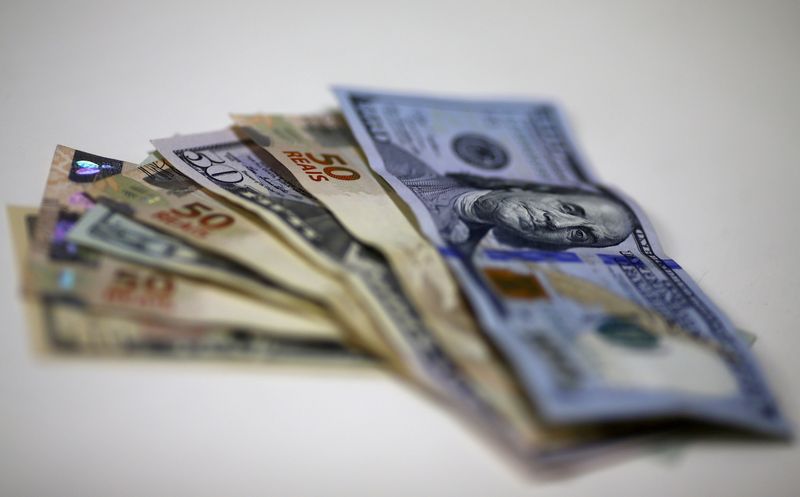RIO DE JANEIRO, BRAZIL – The local market started the week strongly pressured by the external scenario. The Ibovespa fell close to 100,000 points, while the US dollar reached R$5.14 at the maximum of the day.
The increase in concerns about inflation in the USA pressured the Treasuries rates – with investors reinforcing bets that the Federal Reserve may be even tougher in its monetary policy decision this week – and brought down stock markets worldwide.
The Ibovespa ended the day with losses of 2.73%, at 102,598.18 points, after touching 101,700 points in the intraday minimum.

It was the seventh consecutive negative session, which caused the main benchmark of the Brazilian stock market to be in the red for the year, with an accumulated drop of 2.12%.
The dollar ended the week with an appreciation of 2.56%, trading at R$5.1146.
“The movement started last week suggests a resumption of the bearish trend, both in the Ibovespa and in the international markets, targeting their lows in 2022. If this point is exceeded, it will open space for even more falls,” analysts from Itaú BBA state in a report, indicating the 100,000 points as the next support region for the local stock index.
If for the meeting of the Monetary Policy Committee (Copom) of the Brazilian Central Bank this week, no surprises are expected, investors have turned their attention to what will happen in the USA.
The fear is that the Federal Reserve will be forced to toughen its action with more interest rates to contain inflation. It reinforced the rise in the yield of the 10-year Treasury, which went from 3.163% to 3.43%, the highest in 11 years.
“From Friday on, the market’s perception increased that there will be a global recession in the next 12 or 24 months or high inflation for a long time, and the market thinks that the Fed will follow a path that avoids high inflation, which may reduce global activity,” says Cristiano Oliveira, chief economist at Fibra Bank.
“Now, whether it will turn into a global recession is still difficult to know,” he adds.
Along these lines, the American currency rose 2.56%, trading at R$5.1146 in the spot market. Against other emerging currencies, the movement was similar.
The dollar rose 2.40% against the Mexican peso, 1.46% against the South African rand, and 2.14% against the Chilean peso.
The DXY index, which measures the dollar’s performance against a basket of six major global currencies, advanced 1.01%, at 105.20 points, the highest level in almost 20 years.
In the Brazilian market, which has already had bad trading sessions with investors paying attention to the growing fiscal risk, the external scenario’s worsening could be very negative.
Besides the USA, the market was again impacted by the news of new lockdowns in China, which turned into an almost generalized drop in the Ibovespa.
Among the blue chips (the most representative companies of Ibovespa), Vale ON fell 3.17%, Usiminas PNA lost 4.85%, Gerdau PN worsened 5.32%, and CSN ON retreated 6.06%.
Petrobras ON and PN accumulated falls of 1.52% and 1.28%. In the financial sector, Bradesco PN dropped 0.78%, Itaú PN -1.08%, Santander units lost 1.22%, and Banco do Brasil ON fell 2.23%.
In a report on emerging currencies, US bank Wells Fargo emphasizes that US monetary policy trends are contributing to category weakness and maintains its view that “central banks will be the primary driving force for weakening emerging currencies in the second half of this year.”
“Last Friday’s US CPI data was especially noteworthy in this regard,” Wells Fargo points out.
With information from Valor Econômico

